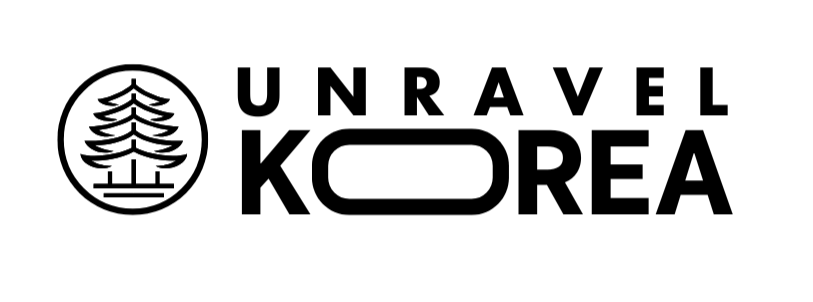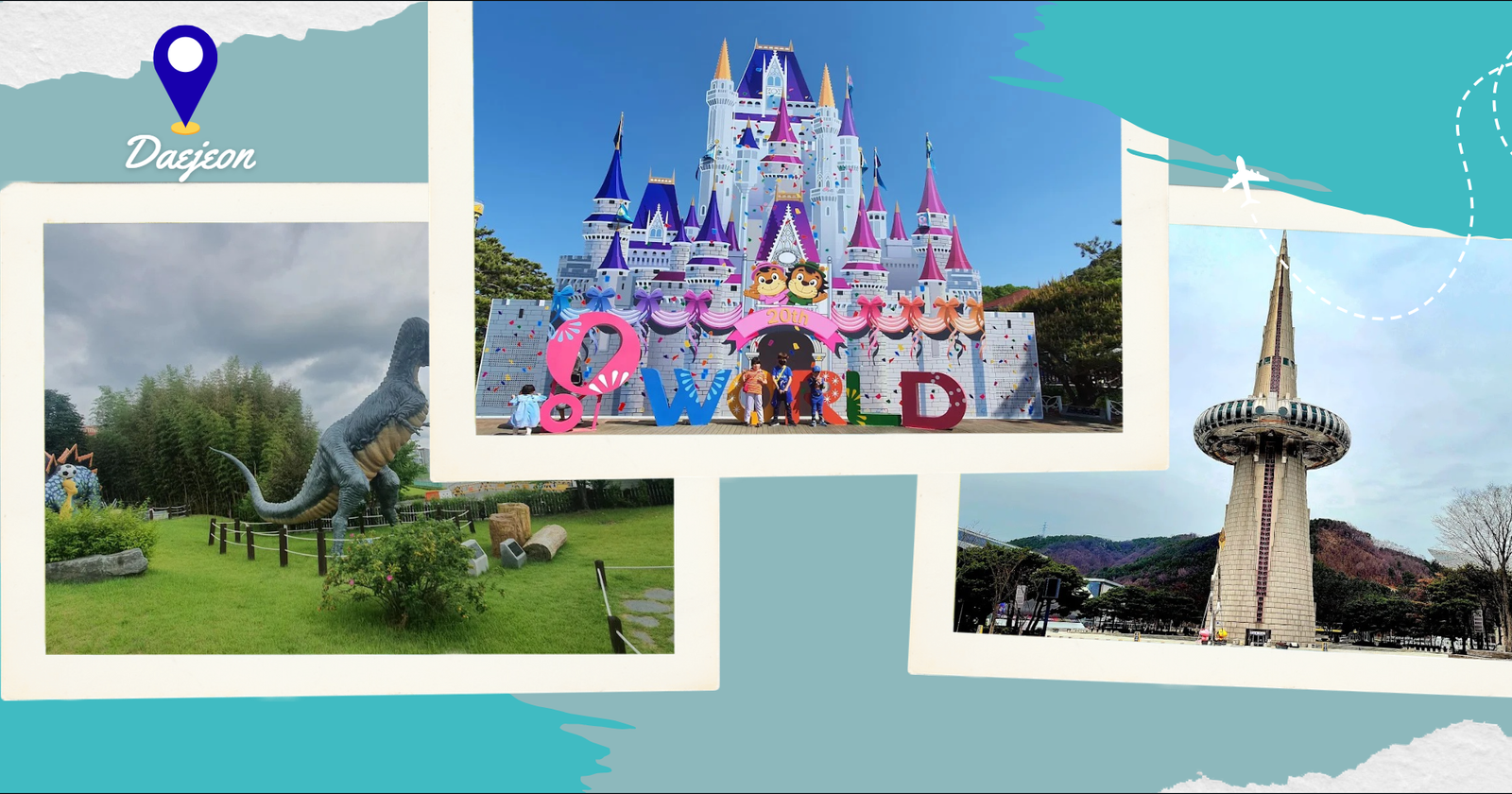Daejeon is South Korea’s fifth-largest city, located in the heart of the country. Often overlooked by international tourists, this dynamic city offers an excellent blend of science, nature, hot springs, and traditional culture, making it a perfect stopover between Seoul and Busan or a destination in its own right.
What is Daejeon Famous For?
Science and Technology Hub: Home to KAIST (Korea Advanced Institute of Science and Technology) and over 20 research institutes, earning it the nickname “Korea’s Silicon Valley”
Hot Springs: Famous Yuseong Hot Springs district with therapeutic mineral waters
Transportation Center: Major junction connecting all regions of Korea via KTX high-speed rail
1993 Daejeon Expo: Hosted the World’s Fair, leaving behind modern infrastructure and parks
Clean and Organized: Known as one of Korea’s cleanest and most livable cities
Government Science Complex: Houses many national research facilities
Top Things to Do in Daejeon
Daejeon O-World
A large theme park combining a zoo, amusement rides, and botanical gardens in one complex.
Zoo section: Over 600 animals including tigers, bears, elephants, and giraffes
Amusement park: Roller coasters, family rides, and entertainment shows
Flower Land: Beautiful gardens with seasonal flower displays
Sky Tower: Observation deck with city views
Entrance fee: 33,000 KRW adults (combined zoo + amusement park), 26,000 KRW teenagers
Hours: 10 AM – 6 PM (varies by season)
Time needed: 4-6 hours for full experience
Best for: Families with children, couples, anyone wanting outdoor entertainment
Hanbat Arboretum
Korea’s first urban arboretum featuring diverse plant collections in beautifully landscaped gardens.
Size: 387,000 square meters with 19 themed gardens
Highlights: Magnolia garden, rose garden, wetland area, greenhouse conservatory
Entrance fee: FREE
Hours: 24 hours (greenhouses 9 AM – 6 PM)
Best seasons: Spring for flowers, autumn for foliage
Time needed: 1-2 hours
Perfect for peaceful walks, photography, and escaping urban stress. The arboretum sits next to Expo Park, easily combined in one visit.
Daejeon Jungang Market
Traditional Korean market operating since 1965, offering authentic local food and shopping experiences.
Specialties:
- Fried chicken (dakgangjeong) – market’s signature dish
- Fresh produce and ingredients
- Traditional street food
- Clothing and household goods
- Local snacks and sweets
Hours: 8 AM – 8 PM (individual shops vary)
Best time: Lunch or early dinner for food stalls
Budget: 3,000-10,000 KRW for meals
Experience: Authentic local atmosphere, minimal English
The market provides genuine Korean market culture without tourist crowds found in Seoul markets.
National Science Museum
Korea’s premier science museum showcasing technology, natural history, and interactive exhibits.
Sections: Basic science, industrial technology, transportation, natural history, space exploration
Highlights:
- Outdoor science park with sculptures
- Planetarium shows
- Hands-on experiment zones
- IMAX theater
Entrance fee: 2,000 KRW adults (additional fees for special exhibitions and planetarium)
Hours: 9:30 AM – 5:30 PM (closed Mondays)
Time needed: 2-3 hours
Best for: Families, science enthusiasts, educational visits
Particularly impressive for understanding Korea’s technological advancement.
Yuseong Hot Springs
Korea’s most famous hot spring district with therapeutic alkaline waters.
History: Over 1,300 years of bathing tradition
Water properties: Naturally heated to 40-50°C, rich in minerals
Benefits: Skin health, circulation, relaxation
Hot spring options:
- Public bathhouses: 5,000-10,000 KRW
- Spa resorts: 15,000-50,000 KRW with various facilities
- Hotel packages: Overnight stays with hot spring access
Popular facilities:
- Yuseong Spa Plus
- Riviera Yuseong Hot Springs
- Hotel Riviera Spa Land
District atmosphere: Evening hot spring culture, restaurants, cafes, shopping
Best time: Evening after sightseeing for relaxation
Uam Historical Park
A scenic park commemorating Korean independence hero Lee Sang-ryong, featuring traditional pavilions and mountain trails.
Highlights:
- Traditional Korean pavilion (Nammun Pavilion)
- Rock climbing area (famous in Korea)
- Hiking trails with city views
- Historic monuments
- Cherry blossoms in spring
Entrance fee: FREE
Time needed: 1-2 hours for casual visit, 3-4 hours for hiking
Best for: History buffs, hikers, nature lovers
The park offers a mix of culture, history, and outdoor recreation in one location.
Daejeon Skyroad
An elevated pedestrian walkway offering panoramic views over the city, similar to New York’s High Line.
Length: 1.4 kilometers
Height: 10 meters above ground
Features: Walking path, observation decks, rest areas, photo zones
Entrance fee: FREE
Best time: Sunset or evening when illuminated
Time needed: 30-45 minutes to walk leisurely
The skyroad connects several city districts and provides unique urban perspectives.
Daejeon Expo Civic Plaza
Legacy site of the 1993 World Expo, now a modern urban park and cultural complex.
Features:
- Expo Bridge: Iconic structure over the river
- Hanbit Tower: 93-meter observation tower (3,000 KRW)
- Large fountain shows: Musical fountain performances
- Walking paths: Riverside trails and gardens
- Cultural venues: Performance spaces and exhibition halls
Entrance to park: FREE (tower has fee)
Hours: Park open 24 hours, tower 9 AM – 10 PM
Best time: Evening for illuminated structures and fountain shows
Time needed: 1-2 hours
Popular for evening walks, dates, and family outings. The area represents Daejeon’s modern development.
Here you can explore what best things to do in Busan, Goseong-gun and must visit places in Seoul
How to Get to Daejeon
From Seoul (140 km)
KTX (High-speed train):
- From Seoul Station or Yongsan Station
- Time: 50 minutes – 1 hour
- Cost: 21,000-24,000 KRW
- Frequency: Every 15-30 minutes
- Best option: Fastest and most convenient
Express bus:
- From Seoul Express Bus Terminal
- Time: 2 hours
- Cost: 10,000-13,000 KRW
- Frequency: Every 20-30 minutes
Regular train (Mugunghwa):
- Time: 2.5 hours
- Cost: 12,000-15,000 KRW
- Cheaper but slower alternative
From Busan (200 km)
KTX:
- From Busan Station
- Time: 1 hour – 1 hour 15 minutes
- Cost: 26,000-32,000 KRW
- Frequency: Every 30-60 minutes
Express bus:
- From Busan Seobu Bus Terminal
- Time: 2.5 hours
- Cost: 15,000-18,000 KRW
From Incheon Airport (170 km)
Airport limousine bus:
- Direct bus to Daejeon
- Time: 2.5-3 hours
- Cost: 21,000-25,000 KRW
- Frequency: Every 30-60 minutes
AREX + KTX:
- Airport train to Seoul Station, transfer to KTX
- Time: 2-2.5 hours total
- Cost: 30,000-35,000 KRW
Getting Around Daejeon
Subway: Single line (Line 1) connecting major areas
City buses: Extensive network, 1,400 KRW per ride
Taxi: Affordable, 3,800 KRW base fare
Bike sharing: Available through city bike system
Travel Tips
Duration: Daejeon works as day trip from Seoul or 1-2 night stay
Language: Limited English outside major hotels – translation app helpful
Combination trips: Perfect stopover between Seoul and Busan
Hot springs etiquette: Traditional bathhouses are gender-separated and require full nudity
Food: Try Daejeon’s famous cold noodles (naengmyeon) and chicken dishes
Best Time to Visit
Spring (April-May): Cherry blossoms at parks, perfect weather
Summer (June-August): Hot springs still popular, O-World water attractions
Autumn (September-October): Beautiful fall foliage, comfortable temperatures
Winter (November-March): Hot springs most appreciated, indoor attractions ideal
Daejeon offers a refreshing alternative to Korea’s mega-cities, combining modern attractions, natural hot springs, and traditional culture without overwhelming crowds.
Its central location and excellent transportation make it an ideal stopover or weekend destination for experiencing authentic Korean city life beyond the tourist trail.

